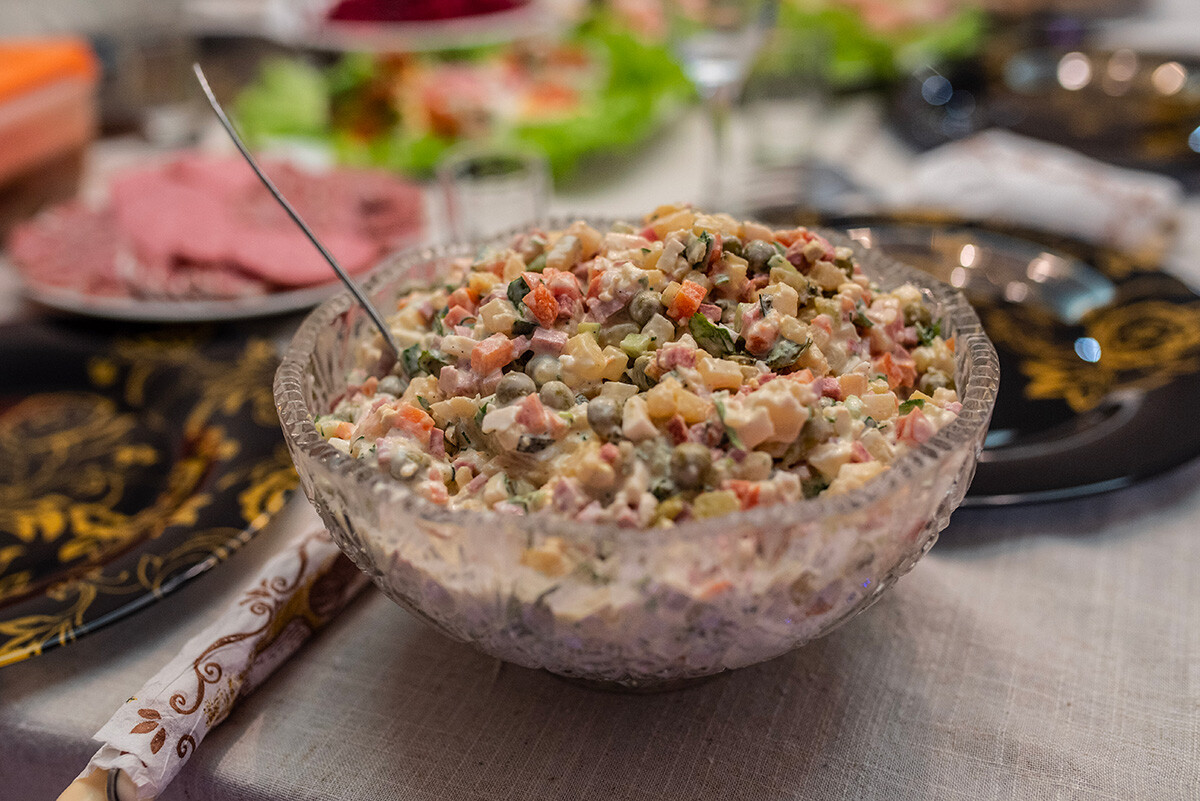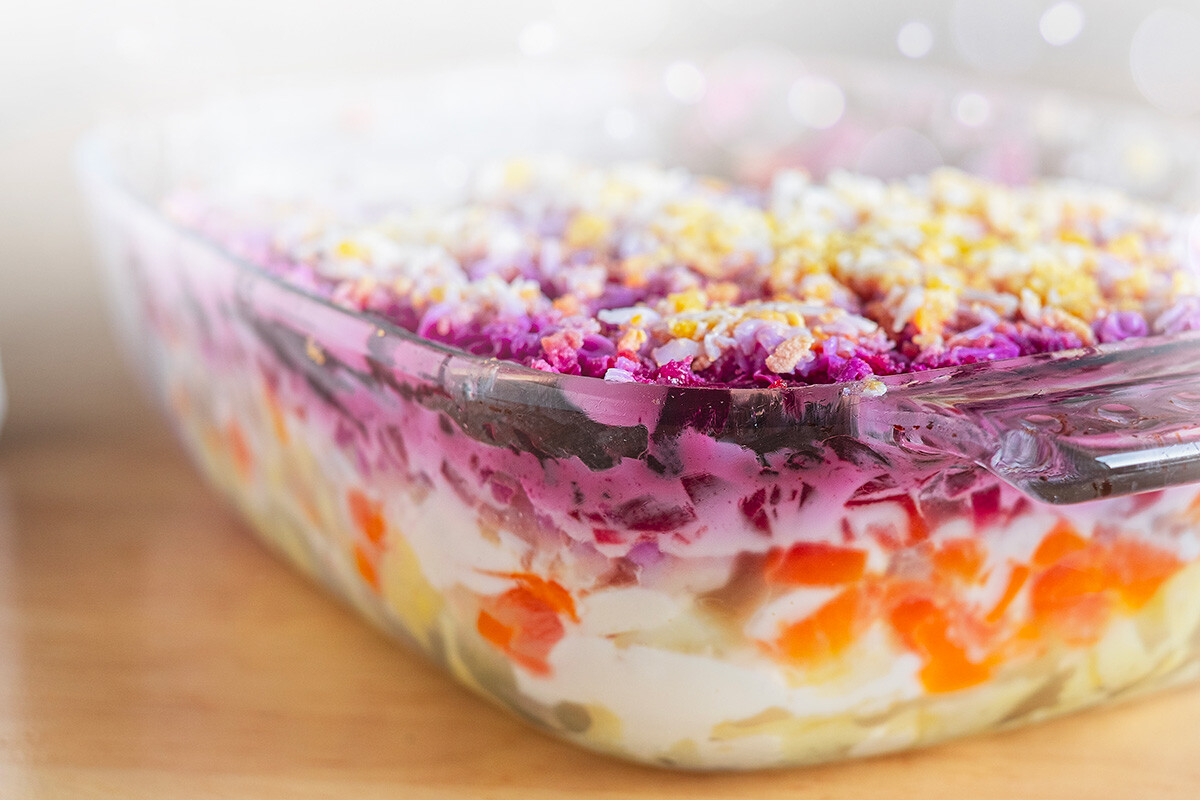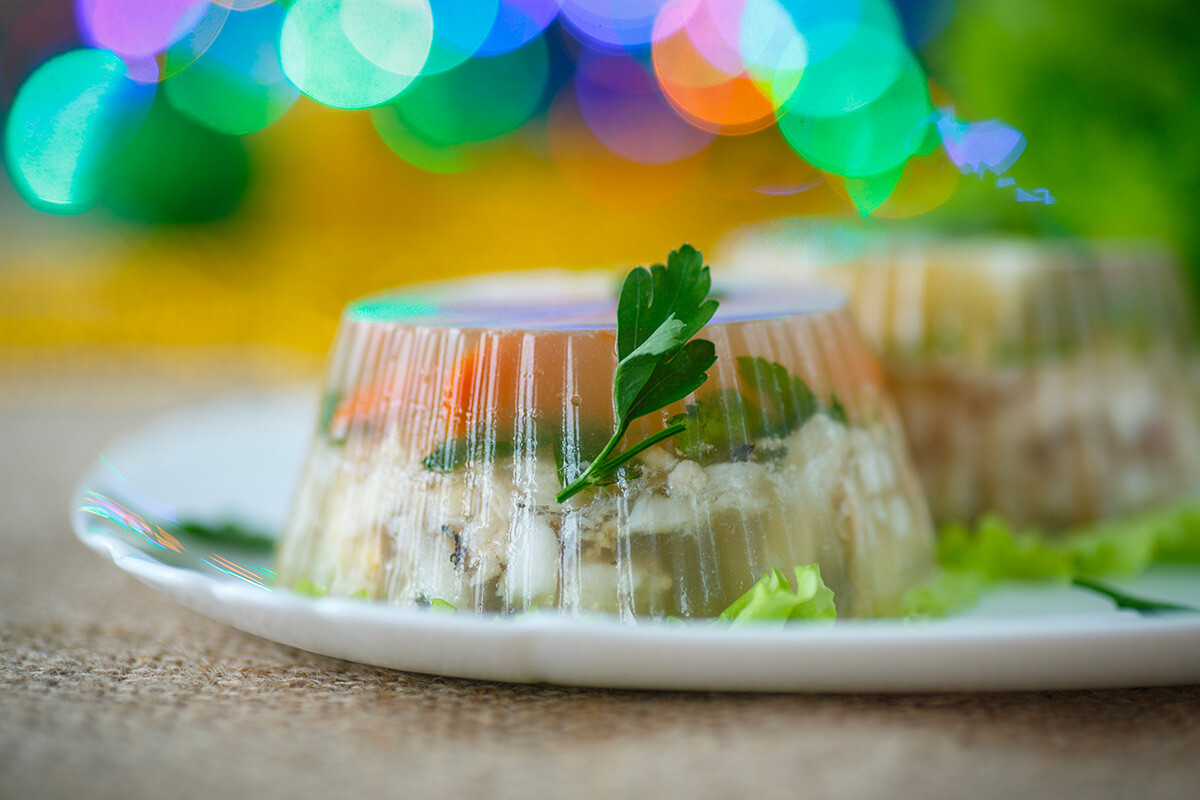

The simplest way to ruin this traditional salad is to add ingredients that are not usually added.
“Once, when on a visit to a friend’s place, I tried Olivier Salad with sauerkraut. At first, no one could quite tell what was wrong, but then the hostess confessed she couldn’t find the usual pickles. So she couldn't think of anything better than adding sauerkraut into the salad. This Olivier Salad had a weird sour taste,” wrote Tamariska, sharing her negative experience on an Internet forum.
Sometimes, people add onion in their Olivier Salad, although the majority of people prefer to go without it during the winter holidays, or only use a small amount of green onions as decoration for the salad. Apple can also provide an unusual taste – on the one hand, it’ll add freshness to the salad, but on the other hand its sweetness stands out from the overall taste. Sometimes, sweetcorn is added to Olivier Salad, which is also not appreciated by everybody. Sometimes, thrifty hostesses decided to pour the muddy liquid from the can of peas into the salad – that guarantees you get a porridge instead of a salad.
But even if you make Olivier Salad according to one of the classic recipes, it’s important to pick high-quality sausage or meat, not to add too much potato (so your salad won’t be too starchy and viscous), and not to over-boil the vegetables.
Finally, no matter how perfect Olivier Salad is in terms of the quality of its ingredients, it can be ruined by cheap, low-quality mayo.

Unlike Olivier Salad, the recipe for ‘Herring Under a Fur Coat’ includes onions. But if you use too much, then there’s a chance that your soirée will turn into a party of fire-breathing dragons. So it’s best to add onions in the recommended amount. Aside from that, you can soften the taste of the onions if you scald it with boiling water or pour lemon juice on it.
If you boil potatoes and carrots together with beets, then all the vegetables will assume approximately the same color, so you won’t get pretty colored layers. Herring bones can become a very unpleasant ‘cherry on the cake’ – or rather on the salad.
If you generously slather every layer of this salad with mayo, you can get a very fatty dish – herring that swims in mayo with unstable vegetable layers. It will be a mistake to prepare this salad right before your guests arrive – it’s best to prepare it in advance; in that case, a moderate amount of mayo will have sufficient time to soak it.

Today, with the rise of contemporary cooking interpretations there are as many recipes for borsch as there are cooks. But still, there is an established culinary canon that you can rely on.
Usually, borsch has a rich stock that requires quality meat – beef on a bone, as well as a lot of patience. A simple way to ruin borsch is to pour boiling water over the meat instead of cold water, and then boil it on a strong flame, not removing the foam. Then you’re guaranteed sticky goo that will collect on the edges of your pot and a muddy stock.
Borsch’s main feature is its saturated color, for which the beets are responsible. The easiest way of preparing borsch is to put all the vegetables into a pot at the same time and continue to boil. Then the potatoes will turn orange-pink, and the beets will turn pale. Cooks usually add tomato paste, lemon juice, or a bit of vinegar to the beets when stewing them in order not to get an orange mess in the end. It’s important not to be too zealous, so that your borsch won’t turn out visually appealing yet too sour! Beets are added into the soup at the very end of preparation. In that case, they won’t color the other vegetables and won’t lose their own color.

Bliny is a dish made from simple ingredients, but it’s not that easy to make on your first try. Even the slightest mistake can be fatal.
If your goal is to turn your bliny into lumps, then take the ingredients straight from your fridge; in that case, you won’t see any bubbles and your dough will come out wrong. Add too much sugar to the mix and your bliny will burn on the pan. Or add too little flour and your bliny will tear before they reach your plate or your mouth. Fry your bliny as soon as you’ve prepared your dough! In reality – don’t do that. You need approximately half an hour to let all the ingredients in the prepared dough to combine well.
Your bliny will definitely stick to the pan if you don’t warm it first. You can also treat your relatives to semi-fried bliny, especially if you don’t bother to fry them on the reverse side. Raw dough, what a treat!

“What a filthy thing it is, your fish aspic!” says a character in the famous Soviet movie, The Irony of Fate, (or Enjoy Your Bath!).
Simply leave the fishtail, bones, or scales in the aspic – and your ‘filth’ is ready. If you take some fish that’s not-so-fresh and no longer of use in other dishes, then you’ll certainly have lasting memories of this aspic. Unfortunately, any old fish won’t be fresh even in jelly.
Another trick is to pour in a lot of gelatin. While there won’t be a miracle, in the end you’ll be left with a rubbery jelly. So, it’s best to strictly follow the recipe and choose a fish that contains a lot of collagen, which will allow the stock to solidify on its own. Salmon, cod, Atlantic salmon, trout, zander, or pink salmon will do.
Some other bad advice is to put the fish into a container for your fish aspic and pour all the stock over it at once. If you want a fish aspic that looks appetizing, however, then don’t do that. According to the established rules, the fish shouldn’t touch the bottom of the container, but rather, it should gel in the middle of the aspic.
This is how you achieve the best results: first, you partially pour the stock into the container, put it in a cold place, and when the bottom layer solidifies, you can add the fish, vegetables, and pour in the rest of the stock. If you want to prepare everything in one go, then put the vegetables and greens on the bottom, and only after that add the fish.
Dear readers,
Our website and social media accounts are under threat of being restricted or banned, due to the current circumstances. So, to keep up with our latest content, simply do the following:
Subscribe to our Telegram channels: Russia Beyond and The Russian Kitchen
Subscribe to our weekly email newsletter
Enable push notifications on our website
Install a VPN service on your computer and/or phone to have access to our website, even if it is blocked in your country
If using any of Russia Beyond's content, partly or in full, always provide an active hyperlink to the original material.
Subscribe
to our newsletter!
Get the week's best stories straight to your inbox